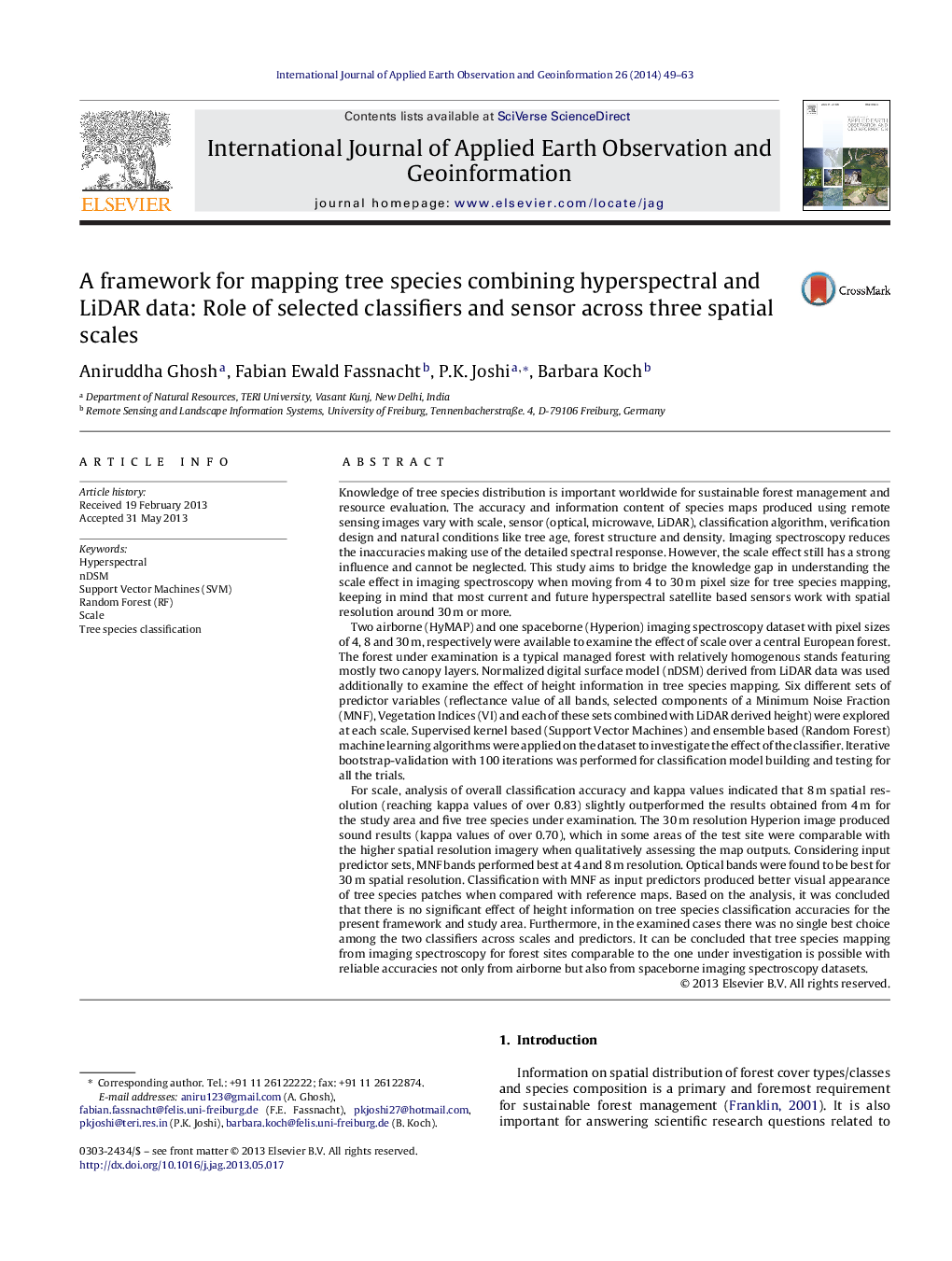| Article ID | Journal | Published Year | Pages | File Type |
|---|---|---|---|---|
| 6349099 | International Journal of Applied Earth Observation and Geoinformation | 2014 | 15 Pages |
Abstract
For scale, analysis of overall classification accuracy and kappa values indicated that 8Â m spatial resolution (reaching kappa values of over 0.83) slightly outperformed the results obtained from 4Â m for the study area and five tree species under examination. The 30Â m resolution Hyperion image produced sound results (kappa values of over 0.70), which in some areas of the test site were comparable with the higher spatial resolution imagery when qualitatively assessing the map outputs. Considering input predictor sets, MNF bands performed best at 4 and 8Â m resolution. Optical bands were found to be best for 30Â m spatial resolution. Classification with MNF as input predictors produced better visual appearance of tree species patches when compared with reference maps. Based on the analysis, it was concluded that there is no significant effect of height information on tree species classification accuracies for the present framework and study area. Furthermore, in the examined cases there was no single best choice among the two classifiers across scales and predictors. It can be concluded that tree species mapping from imaging spectroscopy for forest sites comparable to the one under investigation is possible with reliable accuracies not only from airborne but also from spaceborne imaging spectroscopy datasets.
Keywords
Related Topics
Physical Sciences and Engineering
Earth and Planetary Sciences
Computers in Earth Sciences
Authors
Aniruddha Ghosh, Fabian Ewald Fassnacht, P.K. Joshi, Barbara Koch,
